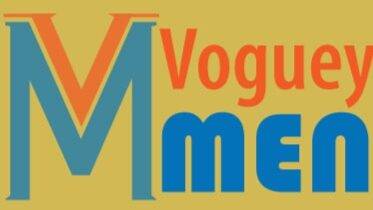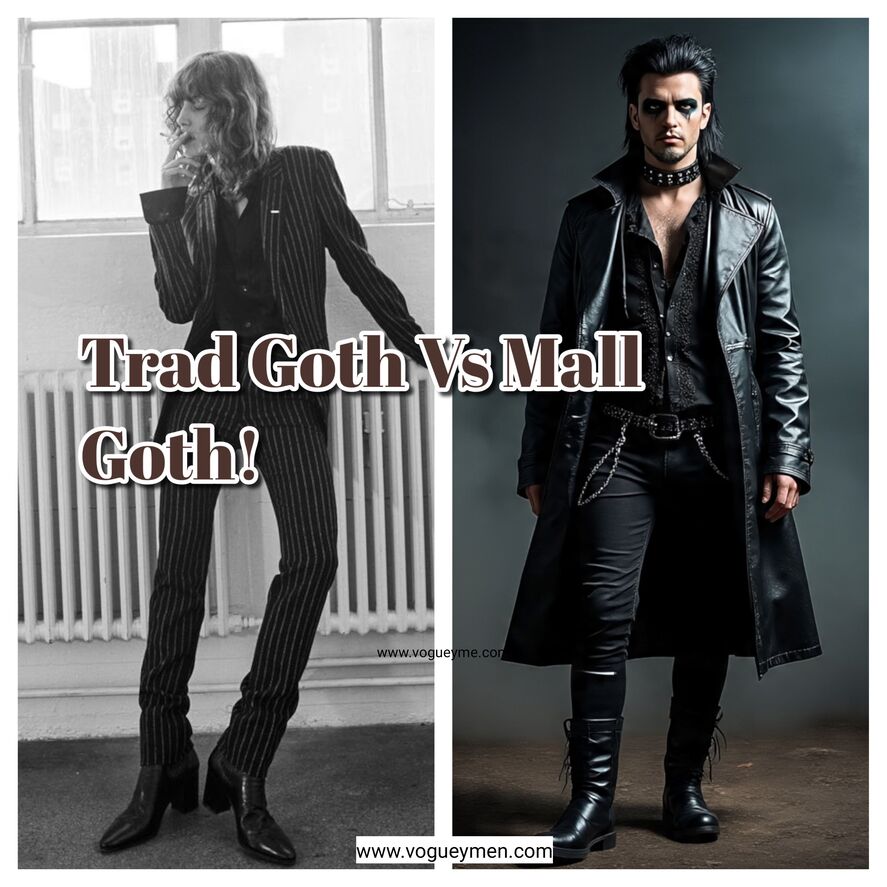Alright, gather ’round, fam, because we’re about to dive deep into a fashion feud (Trad Goth vs Mall Goth) as old as time (or at least, as old as the internet decided to gatekeep). On one side, we’ve got the OG, the true blue, the “I was here before you were even a twinkle in Hot Topic’s eye” Trad Goth. Urban Dictionary, bless its digital heart, often paints them as the authentic keepers of the gothic flame, the real deal. Then, strutting in with a clunk-clunk of their platform boots, we have the Mall Goth. Oh, the scorn! Labeled as wannabes, try-hard yuppy teens, alt kids just dipping a toe in the spooky pool, and derided as mere “spooky kids.” It’s the classic tale of the original versus the perceived cheap copy. But is it really that black and white? Or, perhaps, should we say, black and… slightly less opaque black? Here’s the thing: this clash between Trad Goth and Mall Goth? It’s kinda overblown—and, honestly, a little unfair (especially for Mallgoth). Sure, the aesthetics and cultural roots are different, but at their core, both groups share the same love for darkness, individuality, and looking iconic in head-to-toe black.
So why the beef?
It mostly boils down to purism vs. popularization. Trad Goths often feel like their subculture—built on deep music roots and post-punk angst—has been diluted by the mass-market, mall-rat stylings of the early 2000s. Mall Goths, on the other hand, just want to rock Tripp pants, listen to MCR, and feel seen without being told they’re “not goth enough.”
Let’s break down this velvet vs vinyl feud.
Why all this Ruckus?
Well, for the Trad Goths, it often boils down to a sense of preservation. They’ve seen their beloved subculture, born from the post-punk ashes of the late 70s and early 80s, slowly morph and, in their eyes, become diluted. The core tenets—the music, the philosophy, the DIY ethos—felt like they were being commercialized and misunderstood by a younger generation who might have stumbled upon the aesthetic through a mainstream lens. Mall Goths, with their accessible fashion found in chain stores and their often broader musical tastes, represented this perceived “selling out.” There’s a gatekeeping instinct, a desire to protect the perceived purity of the subculture from those who might only be in it for the aesthetic, without understanding its roots. And let’s be real, no one likes to see something they poured their heart into get misrepresented or trivialized. But here’s the tea: scoffing at Mall Goths is, quite frankly, often wrong. Subcultures evolve, adapt, and find new life in different forms. To dismiss an entire generation’s expression as “wrong” is to ignore the inherent fluidity of fashion and identity. Every subculture, no matter how niche, has entry points, and for many, that entry point was, unironically, the mall.
A Tale of Two Aesthetics: Trad Goth vs Mall Goth
Let’s dim the lights, cue the Sisters of Mercy, and dive into the black abyss of two of goth’s most iconic offshoots.
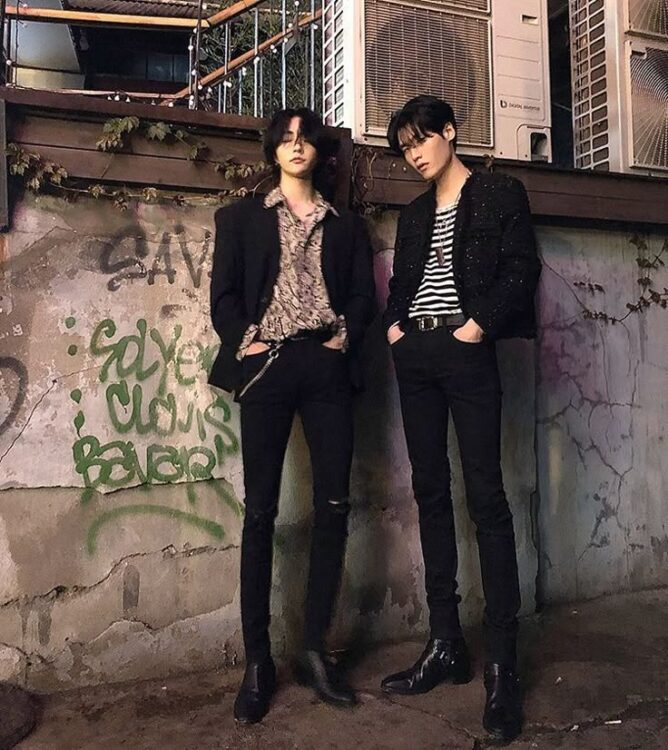
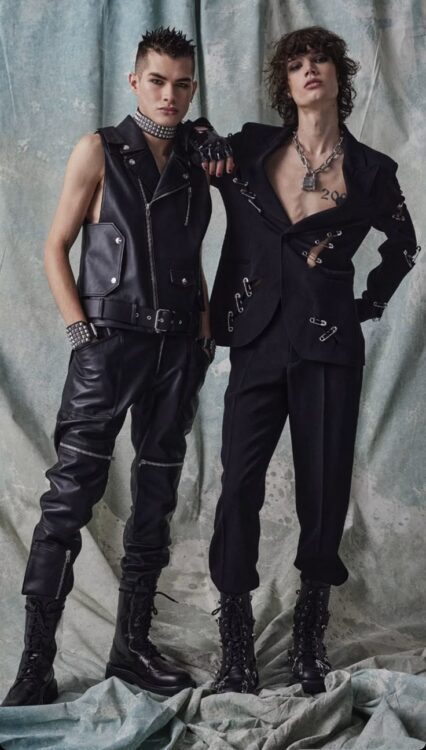
Trad Goth: The Eldritch Elegance
The term “Goth” itself hails from the Gothic literary movement of the 18th and 19th centuries, characterized by dark romance, mystery, and the macabre. Think haunted castles, tortured souls, and dramatic narratives. When applied to the subculture, it captured a similar aesthetic and emotional resonance. “Trad Goth,” short for Traditional Goth, emerged as a way to distinguish the original wave of Goths from later iterations. It signifies a direct lineage to the nascent scene of the late 1970s and early 1980s in the UK, particularly around post-punk and new wave bands.
Brief History: Trad Goth sprouted from the ashes of punk, as disillusioned youth sought something more introspective, theatrical, and melancholic. Bands like Bauhaus, Siouxsie and the Banshees, The Cure (early), and of course, The Sisters of Mercy laid the sonic foundation. It was a DIY scene, forged in dimly lit clubs and independent record shops.
Nomenclature: “Goth” was borrowed from Gothic literature and architecture—dark, dramatic, moody. “Trad Goth” is a later term used to distinguish these original goths from newer offshoots.
Fashion Staples: Think Long, flowing velvet cloaks, lace or ruffled blouses,corsets, crushed velvet dresses, tailored suits, black leather tops, fishnet tights (often ripped), and plenty of bondage straps or harnesses. Silver jewelry (often with occult symbols like ankhs, crosses, or skulls), chokers (velvet or spiked), rosaries, elaborate hair accessories (like velvet bows or spiderweb clips), and sometimes antique cameos. Leather gloves are a common touch.
Makeup & Hair: Pale face, black eyeliner for days, dark lipstick, teased black hair—sometimes with deathhawk (goth mohawk) realness.
Music Taste: Bauhaus, Siouxsie, The Cure, The Damned—basically, the founding fathers and mothers of darkwave.
General Vibe: Elegant vampire who writes poetry at night and haunts graveyards for inspiration. Often serious, occasionally sarcastic, and deeply into aesthetics and artistry.
Mall Goth: The Neo-Noir Novices
The term “Mall Goth” is, as you might guess, a bit of a jab. It emerged in the late 1990s and early 2000s, coinciding with the rise of alternative fashion retailers like Hot Topic and Spencer’s Gifts, which were predominantly found in… you guessed it, malls. The “goth” part comes from their clear adoption of elements from the broader gothic aesthetic, even if their understanding of its origins might be more superficial.
Brief History: Mall Goth was a product of its time – the late 90s and early 00s. Nu-metal, industrial music, and a broader surge in “alternative” culture created a fertile ground for a more commercialized and accessible version of goth to flourish. While some Trad Goths bemoaned the commodification, for many teens, this was their first real exposure to anything outside the mainstream, a portal into a darker, more expressive world.
Nomenclature: “Mall Goth” was originally a derogatory term for kids who dressed goth but mainly shopped at malls—specifically at Hot Topic or Spencer’s.
Fashion Staples: Tripp NYC pants (those iconic wide-leg, strapped, and chained wonders!), band tees (Slipknot, Korn, Evanescence), striped arm warmers, fishnets under cargo shorts with more contemporary cuts, and chunky boots. While black is still king, the silhouettes tend to be less flowing and more structured. Other accessories include chokers (often spiked or O-ring), studded belts (multiple!), wallet chains, bandanas, fingerless gloves, backpacks adorned with band patches or pins and an abundance of silver-toned jewelry, often with skulls, bats, or pentagrams.
Makeup & Hair: Black lipstick, thick eyeliner, dyed hair (black or electric blue), spider web nails, and sometimes, raccoon eyeshadow.
Music Taste: Nu-metal, emo, industrial, and alt-rock—Slipknot, My Chemical Romance, Marilyn Manson, Linkin Park, The Used.
General Vibe: Rebellious, angsty, often a bit playful teen who’s mad at their mom and wants to summon demons but also loves anime and Monster energy drinks. Campy, chaotic, but oddly sincere.
More to explore.
Looking to master the art of monochrome style without diving into goth territory? Discover sleek and versatile All-black Outfit Ideas for Men that celebrate timeless cool—click here to explore how to pull off the total black look with modern edge and sophistication.
⚰️ Key Differences & Odd Similarities
| Aspect | Trad Goth | Mall Goth |
| Music Roots | Post-punk, deathrock, darkwave | Nu-metal, emo, industrial |
| Style Inspiration | Victorian, punk, romantic | Cyberpunk, alt, rave, cartoon goth |
| Color Palette | Strictly black or muted | Black with red, neon, or purple accents |
| Main Retail Haunt | Thrift shops, DIY, underground | Hot Topic, Spencer’s, online alt stores |
| Attitude | Mysterious, artistic, intellectual | Loud, angsty, meme-y |
| Aesthetic Vibe | Gothic romance | Spooky rebellion |
But both love black, both embrace being the outsider, and both believe Halloween is a lifestyle, not a day.
Final Thoughts on the Epic Gothic Showdown
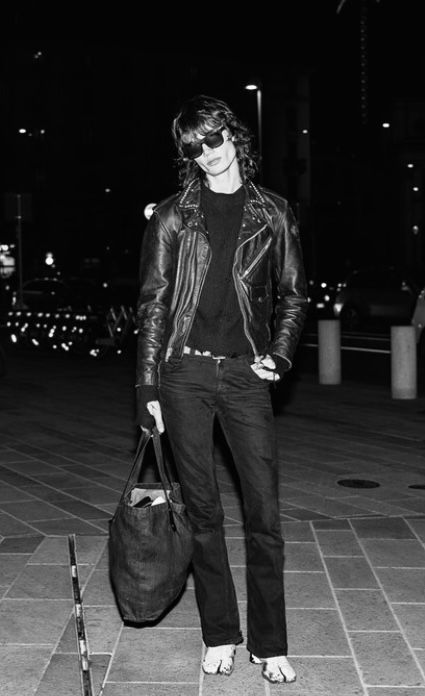
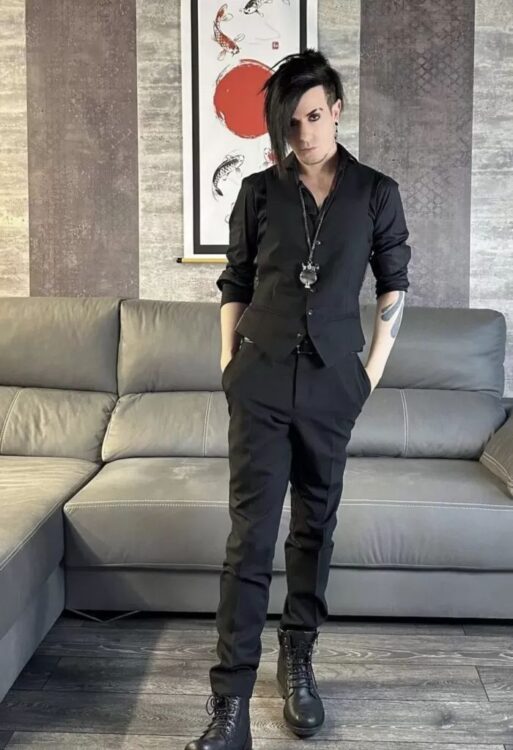
Here’s the plot twist: there’s room for both kinds of goths—and everything in between.
Trad Goth may be the original blueprint, the elegant elder vampire who still listens to Bauhaus on cassette. But Mall Goth is like the chaotic, misunderstood younger sibling who blasts Evanescence on an iPod Nano while stomping through the mall food court in oversized boots.
While they look different and sound different, they’re cut from the same black velvet cloth. They share roots in rebellion, creative self-expression, and a refusal to conform to pastel norms. Mall Goth might’ve been dismissed for being “too commercial” or “cringe,” but let’s be real—it brought goth to a whole new generation. It mixed eyeliner with irony, added a dash of 2000s chaos, and gave goth culture a massive second wind.
And now? Mall Goth is making a comeback—and it’s doing so unapologetically. Gen Z is revisiting it with fresh eyes, mixing it with e-girl aesthetics, internet humor, and hyper-nostalgia. And even Trad Goths can’t deny the energy it’s bringing back into the dark scene.
So whether you’re a graveyard poet or a chain-dragging mall rat, just know: there’s space for all dark hearts under the black sun. 🖤
Let the eyeliner be thick, the boots be chunky, and the judgment be left in the crypt.
